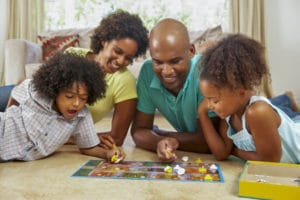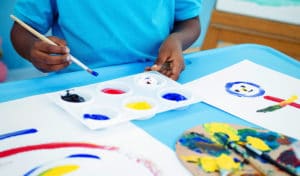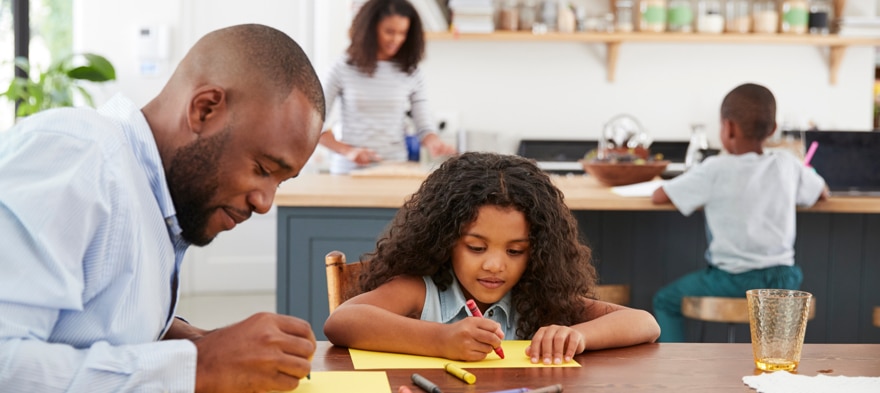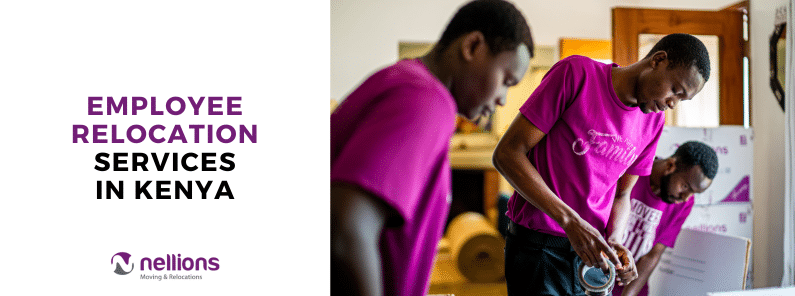The Coronavirus has brought about some unprecedented changes in our lives. Never before have we had so many people confined to their homes for an extended period, and it doesn’t seem like it will end soon. With the kids spending so much time at home, it’s easy to let the next few months pass away without doing anything of particular importance, but it doesn’t have to be so. Even though we’re not all teachers by profession, we can rethink how we spend time with our kids so as to add some educational value while at it. This article delves into some activities that you can do with your kids that are not just fun, but educational as well.
Please keep in mind that these are broad suggestions, and you’ll have to tweak them a bit to suit your child’s age and ability.
1. Board games

Did you know that board games can teach your child valuable skills like language, creativity, teamwork, and problem-solving in an easy and relatable manner? In particular, strategy games are useful in developing the frontal lobes of the brain. Chess has long been touted for helping boost critical thinking, but it’s not the only one with educational benefits. Monopoly is very good for teaching about finances, as author Robert Kiyosaki professes to be the root of his wealth. Other good board games include Bingo, Scrabble, The Socially Speaking Game, and more laid out in this article.
A few other benefits of playing board games to your kids include: sharpening focus, teaching them the value of obeying rules, and are a healthy way to unwind unlike hours of mindless media consumption.
The trick when selecting an appropriate board game for your kids is for it to require players to exert more mental effort while playing.
2. Hands-on activities

Kids love physically engaging activities. Just observe a bored child to discover the multiple ways they explore to relieve their boredom, and you’ll see that majority of them involve some kind of physical activity. Kids learn best when the subject is relatable to them, and especially when it’s personally meaningful. Hands-on learning engages kids in multiple modes of learning: kinesthetic, problem-solving, and trial and error. These are all crucial for building thinking patterns about how people, places, and even events relate to each other. They teach kids through play, and by being your child’s companion in these activities, your role changes from teacher/dispenser of knowledge to co-explorer of knowledge.
Such activities for younger children include playing with Lego, baking mud cakes (which can graduate to pottery for the older kids), moulding with play-doh, colouring with crayons and more.
For the older children, educational activities need to be more challenging and can take the form of mini-projects such as building a dog kennel or starting a kitchen garden (see point 8 😉). You can also take concepts out of their school textbooks and turn them to practical activities such as science experiments. This article provides a few more ideas.
3. Instill a reading culture

It is said that the best way to hide something from an African is to put it in writing. This is largely attributable to our poor reading culture, which unless instilled from a young age is hard to develop later in life. The basis of this is having plenty of books around the house. Children who grow up in households full of books develop advantages in literacy and numeracy, as scientific studies have found.
Having books is only the first step though, as you’ll need to sit down with your child(ren) and instil the basics of phonics, grammar and how to read. Storybooks with strong lessons are a good place to start with young children. The beauty of it is that once they take up reading with enthusiasm, you’ll hardly ever need to pressure them to read while they’re older.
4. Storytelling

In a world where we have books, websites, videos and radio to pass information, the importance of storytelling has greatly decreased in recent decades. Yet the art of telling a tale, engaging your listeners’ attention, carrying them through the conflict and resolution without dampening their excitement or losing their attention, has become the reserve of a few practitioners instead of the masses as it’s traditionally been.
Storytelling is a very important skill with multiple applications, from business marketing to journalism and even day-to-day life.
It is, however, not a very difficult skill to develop. Thirty minutes of practice per day – say, after supper – can yield very good results in no time. One way to start of by doing this is reading stories. It starts as simply as asking your children about an interesting story they know based on different themes. You can have them make up stories or talk about their experiences doing certain things. Th possibilities are endless, as this article details. Over time, you can tweak this model to where they would make their own stories or retell them from memory.
This is also an opportunity to teach them about history, culture and values, a lot of which isn’t in writing, but passed down generations by mouth.
5. Acting out stories
Closely tied to storytelling, this is a method that ensures that stories and lessons stick vividly in your child’s mind long after telling. It also enables you to gauge how they perceive the world vis-à-vis how it’s presented to them.
For the elder kids, this is a perfect way to teach them about their history and culture. Teach them the stories of heroes and antagonists in your culture, and have them act out these stories. This goes a long way into ensuring that we do not completely forget our roots, culture and uniqueness.
6. Learn a musical instrument

Enrich your children’s minds with music. Numerous studies on this topic affirm that learning a musical instrument actually increases your IQ. Interestingly, a vast majority of musical prodigies throughout history from Mozart to Alicia Keys started playing music at a very young age.
For toddlers, hit the right note with fun music classes, making your own instruments (add bells to a paper plate to create a tambourine, for example), and playing musical games. Record instrument sounds and play them back to see if your child can get the answer right, or create a music trivia game and act out the answers. Preschoolers love the one-on-one time with mom and dad and school-age children can begin formal training to enhance their musical skills.
As they grow older, you can introduce them to professional instruments and can easily access lessons through online channels such as YouTube and e-learning platforms like Udemy. Tutors are now also available online, and there’s tons of music books that will guide your child to learn any instrument.
7. Turn your Chores into Games

It’s never too early to start teaching your child the importance of responsibility. Chores are a way to do that, but there’s only one hick-up: kids abhor chores. It’s no secret that they’d rather play instead of work.
🤔 But what if you made a game out of chores?
This one’s gonna require you to think a little out of the box. Done simply, you can create a list of chores that need to be done in the house, and add checkpoints with clear benefits that one can enjoy once they accomplish their tasks. The reward can be as simple as TV time or letting them play with your phone/tablet. Once they get used to your standards, raise the bar a little, and increase the reward accordingly.
Another approach is to classify each chore as a task in a larger game. This one works if you have multiple children who are competitive. It’s very simple: the tasks (chores) to be done are assigned scores (XP points) for accomplishment (based on complexity and desirability) and each child records whichever ones they complete. From there, you set a target that once hit unlocks certain benefits to the individual. At the end of the week, XP points for that week are aggregated, and the one with the highest points gets a special treat like selecting the movie to watch on Movie Night or they select what’s for dinner.
With gamification, you can turn something mundane and bothersome like chores into something that you kids look forward to smashing. Chorewars.com is a tool that can actually help you gamify your chores and get you on top of tasks that need to be done.
8. Gardening

There’s more to planting a garden than sticking a seed in the ground and waiting for something to grow. Gardens are lessons in science, nutrition, and patience all rolled into one plot of dirt in your backyard.
Let’s be practical: no kid remotely enjoys the prospect of spending a long day hoeing in a farm. You won’t teach them much by having them dig rows of trenches. But you can make the lesson that much more meaningful by scaling it down to their level. Approach it like a project. Start with a flower pot or a small kitchen garden and plant it with the kids, give each child a section to take care of (or divide the roles equally), and explain to them the responsibility that it entails.
A garden teaches preschoolers how plants come to life. It’s also an easy way to teach them about nutrition and get them excited about eating the vegetables they’ve grown. School-age children can keep a gardening journal, study a plant’s scientific name, and grow more difficult plants.
The trick here is to approach it like a learning experience – scientific, for the older kids – instead of a chore.
9. Create a website or app

Let’s be honest, most kids would rather spend time on a computer or phone watching Netflix or YouTube. But why not use that magic box on your desk to learn a lifetime skill? Because in the world we’re headed, knowing how to create a website will be essentially as basic as knowing how to use MS Word.
Primary school kids can understand the basics of web design (even though they may not necessarily be the best), but with the help of YouTube and other learning platforms like Udemy, Coursera or Eduonix, they can take pictures for their site, post their thoughts in the form of blogs, and learn what it takes to make a website run smoothly.
For the older kids, some programming lessons can come in handy. Most tech billionaires such as Bill Gates started coding in their teens. You can tie these lessons to a larger project such as a simple app or complex website. Children are wildly creative, and if channeled properly, this creative spirit can lead to very great ideas.
This list is by no far stretch exhaustive. But it’s a starting point for you to develop the course of your children’s learning for the coming months when they’ll be at home. We hope it provides you some insight or sparks a curiosity that leads you to seek more options that work for you. Also, if you know of a particularly genius idea, we would appreciate it if you could share it with us.











